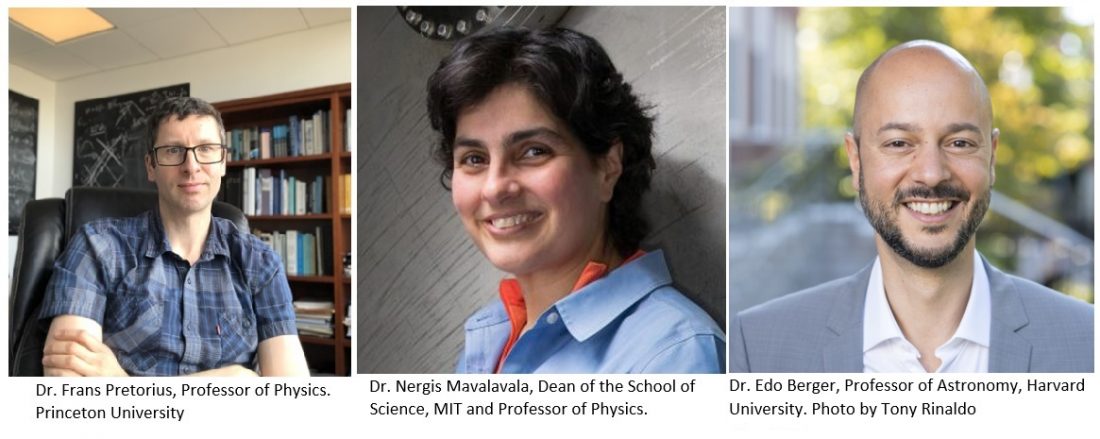Science and Mathematics
Syracuse University Center for Gravitational Wave Astronomy and Astrophysics Opening Ceremony
October 13, 2023 at 1:00pm – 4:30pm EDT
Physics Building 202 and the Heroy Auditorium
This event has already occurred. The information may no longer be valid.

The Syracuse University Physics Department is pleased to present the Opening Celebration of the Gravitational Wave Astronomy and Astrophysics Center.
In 2016, the Advanced Laser Interferometer Gravitational-wave Observatory (Advanced LIGO) announced the first observation of gravitational-waves from colliding black boles. The following year, the observation of a binary neutron star merger with gravitational wave, optical and x-ray telescopes marked a significant breakthrough for multi-messenger astronomy. Syracuse University faculty played a leading role in the discovery and interpretation, which gathered world-wide media acclaim and defined a new field of astrophysics.
Now, in 2023, Syracuse is once again at the forefront of this exciting field with the creation of the Center for Gravitational Wave Astronomy and Astrophysics. Join us in celebrating the opening of the center as Syracuse University enters a new era of discovery:
Scientific Program (Location – Physics 202)
12:30 p.m. – Doors open
1:00 p.m. – Presentation(s) begin
- Open Questions on the Dynamics of Black Holes, Dr. Frans Pretorius, Professor of Physics. Princeton University
- Abstract: Today we have a solid theoretical understanding of the dynamics of black holes, as predicted by general relativity, for the typical binary merger expected as an astrophysical gravitational wave source. However, in more “extreme” situations, namely black holes that collide with ultrarelativistic velocities, and black holes that spin near the maximal limit allowed by general relativity, less is known, in some cases even qualitatively. In this talk I will discuss some of these open problems, and speculate about possible answers.
- All That Glitters Is Gold: Gravitational Waves, Light, and the Origin of the Heavy Elements, Dr. Edo Berger, Professor of Astronomy, Harvard University
- Abstract: The discovery of gravitational waves from merging black holes and neutron stars has opened up a new window on the universe. Combining this information with the traditional technique of using electromagnetic radiation (light) provides insight that is not accessible to either technique alone. In this talk I will describe the motivation for joint gravitational wave and electromagnetic studies, highlighting the exciting example of the famous binary neutron star merger GW170817. I will describe how joining gravitational waves and light we were able to explore the formation of heavy elements (including gold), and I will describe how future gravitational wave observatories and new telescopes will lead to a revolution in this arena.
2:40 p.m. – Coffee and Refreshments
Center Opening Program (Location – Heroy Auditorium)
2:45 pm – Doors Open
3:00 p.m – KEYNOTE PRESENTATION
- “Gravitational Waves: A New Window Into the Universe,” Dr. Nergis Mavalavala. Dean of the School of Science, MIT, and Professor of Physics.
- Abstract: The first-ever detections of gravitational waves from colliding black holes and neutron stars have launched a new era of gravitational wave astrophysics. I will describe the science, technology, and human story behind these discoveries that provide a completely new window into some of the most violent and warped events in the Universe.
4:20 p.m. – Question & Answer Session
4:30 p.m. – Reception (Heroy Lobby)
This event was first published on August 8, 2023 and last updated on October 10, 2023.
Event Details
- Category
- Science and Mathematics
- Type
- Ceremonies
- Region
- New York Campus
- Open to
- Alumni,
- Campus Community
- Organizer
- CAS-Department of Physics
- Contact
- Kevin Garvey
kjgarvey@syr.edu
315-443-5960
- Accessibility
- Contact Kevin Garvey to request accommodations
- Parking
- Parking is available in the Irving Garage. Guests will need to tell the attendant that they are on campus for the Gravitational Wave Center Opening.
